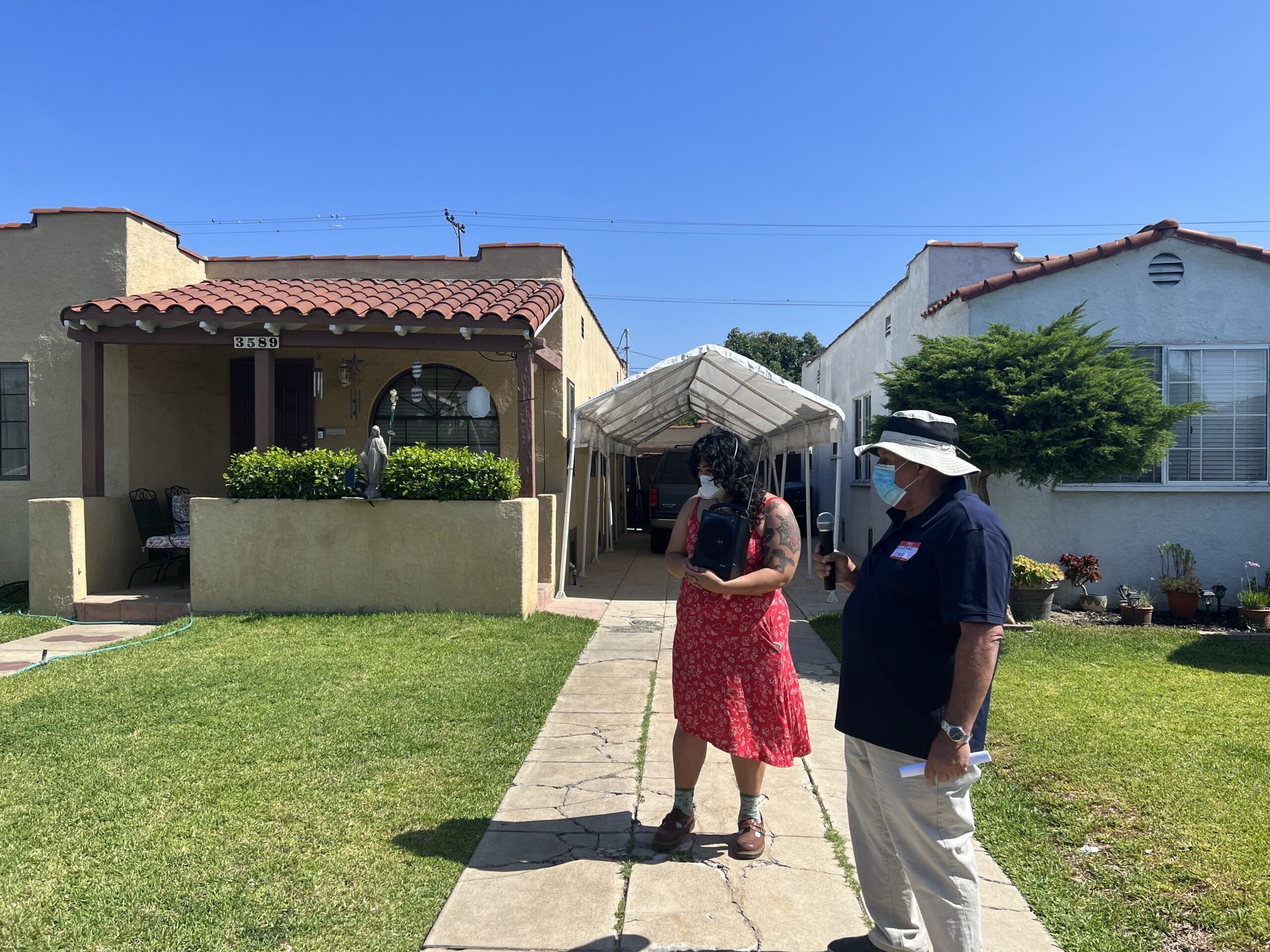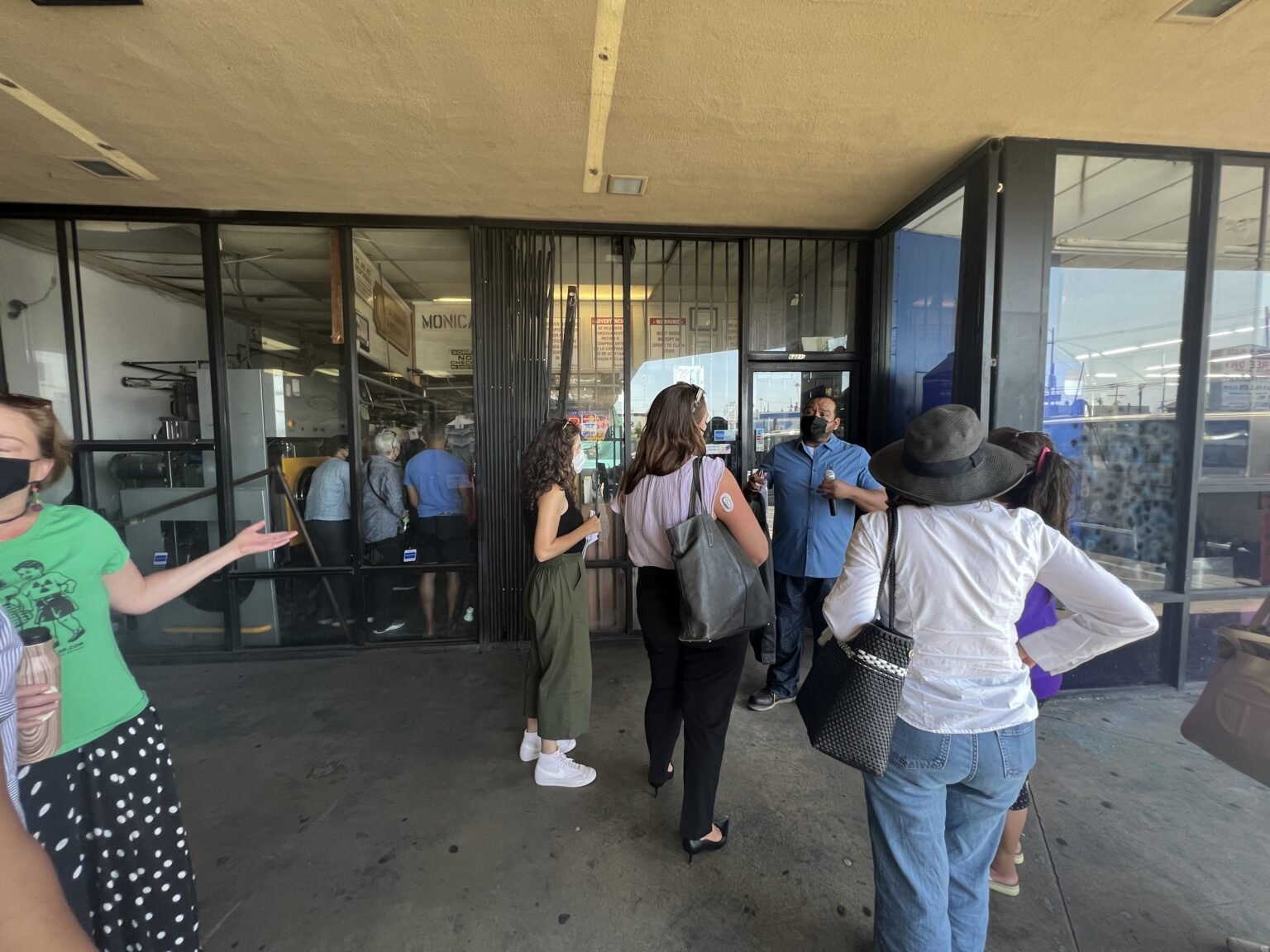Toxics & Solutions Tour: Coming Together and Building a Unified Front
On July 11, environmental justice groups, community members, and representatives of the California Department of Toxic Substances Control (DTSC) embarked on a tour throughout Los Angeles to highlight communities impacted by toxic contaminants and identify solutions to protect those who are most affected by toxic exposure.
Working with DTSC and the Board of Environmental Safety
The DTSC is responsible for managing toxic waste in California. In addition, it’s responsible for protecting communities and the environment from various toxic chemicals. Yet, for decades, frontline communities have continuously been plagued by pesticide, plastics, and nuclear waste contamination. In response to the agency’s decades-long failures, distrust between the agency, grassroots leaders, and EJ groups grew, leading activists to fight for reforms and accountability measures. These efforts led to Governor Newsom’s passing of SB158, a legislative bill that formed the Board of Environmental Safety (BES), established accountability and oversight within the agency, brought more resources for cleanup efforts, and created a new hazardous waste management plan.
A timely opportunity presented itself with the establishment of the new BES. In spite of the differing opinions among environmental justice groups on what reforms were needed for the agency, one thing was clear: DTSC accountability was imperative. This was seen as a chance for the CA environmental justice movement to build common ground and establish a unified advocacy voice with the new board, no matter the different political strategies. Seizing the moment, PSR-LA, in collaboration with the CHANGE coalition and Communities for Better Environments (CBE), launched a Toxics & Solutions tour in Los Angeles.
Touring Toxic Sites
The Toxic & Solutions tour highlighted seven independent sites and stories across LA County. Our tour took us on a meaningful journey to clearly visualize the profound cumulative impacts of toxic chemical life cycles that frontline communities and workers face daily. The participants toured landmark contamination sites like EXIDE, learned about Safer Consumer Products for Black Beauticians, and discussed ways to elevate worker safety and protection from toxic exposure.
Tour participants visited the site of the proposed KIPP Public Charter School. This site is a former Metal Foundry.
Community members, leaders, and organizations shared their personal and collective experiences dealing with toxic exposure in residential areas, schools, and personal-care products. In addition, they had the opportunity to discuss their needs with DTSC and BES staff. Each site was selected to help:
Build cross-learning opportunities to understand better the life cycle impacts of toxic chemicals on frontline communities;
Build common ground and alignment among BES, DTSC staff, and EJ groups on regulatory gaps, barriers, challenges, and opportunities to move on to safer alternatives and health protection measures that address legacy contamination issues;
Amplify community-driven, environmental justice, and indigenous-centered solutions that can serve as models for clean production, safer alternatives, and a just transition; and
Provide spaces for impacted residents to speak directly about their personal experiences living next to key sites.
The overarching goal of this tour was to emphasize the intersectionality of contamination issues, regardless of the unique aspects of each site’s contamination and history with DTSC. There are still significant disagreements between BES members, DTSC staff, and regulatory representatives’ assessments of the issues community members face each day. For DTSC to prevent past mistakes, it must prioritize the needs of impacted communities and incorporate their input into DTSC decisions.
Lessons Learned
The Toxics & Solutions Tour sought to highlight cases in the region and illustrate how DTSC and the BES can start addressing past sins to prevent future mistakes. Despite years of distrust, the Toxics & Solutions Tour was a step in the right direction. We urge the BES and DTSC to take the steps we suggested during the tour and provide meaningful community engagement in the future. Together with our allies, we will continue to monitor DTSC’s process and build accountability metrics centered on environmental justice and precautionary principles. Together we will strive to ensure that solutions and actions are moving toward a Just Transition and a new regenerative economy.


